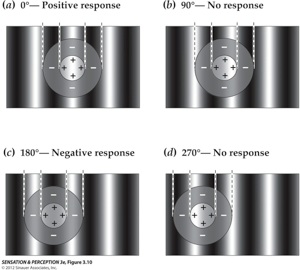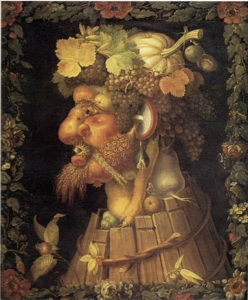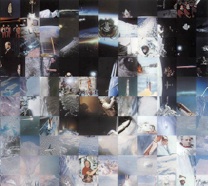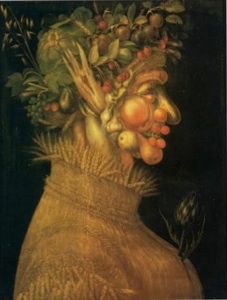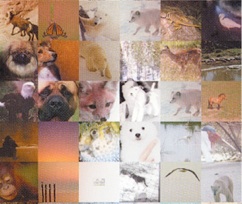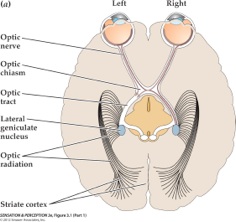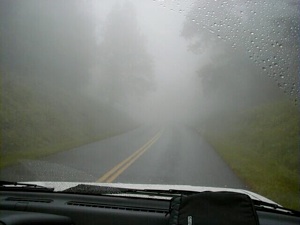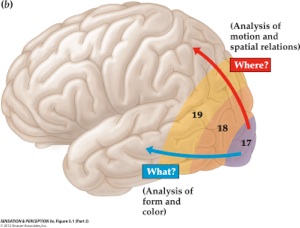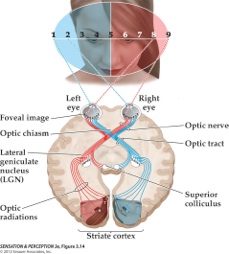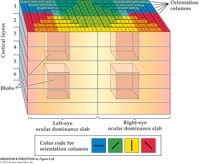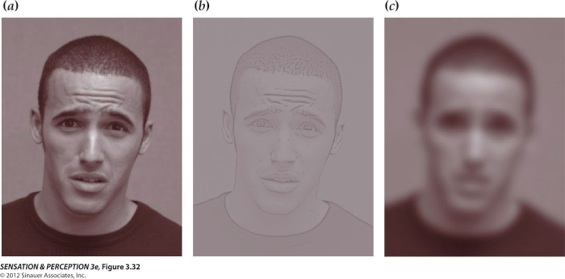Spatial vision
Natural visual images contain important information at different spatial ‘frequencies’. High spatial frequencies correspond to tiny details in images while low spatial frequencies correspond to large, diffuse features. (You know the phrase, ‘to miss the forest for the trees’? That means, in this context, focussing too much on the high frequencies (the trees) and missing the low frequencies (the forest)). Here are some especially clever ways to show that there can be important information in both:
The idea breaking down images into spatial frequency ‘components’ is called Fourier analysis. If you could only see low spatial frequencies, the world would look like image (b) below (as it does to you without your glasses, or to a human infant, or a goldfish), on the other hand, if you only had detail vision (high frequencies) the world would look to you like image (c). The ‘eye test’ for determining how well you can see these different spatial scales is the Constrast Sensitivity Function (CSF). Instead of using pictures like those below, we use a standardized set of gratings, sinusiodal modulations of light and dark that look like a pattern of striped bars.
18. Spatial vision
1:24 PM
Images contain important information in the details and in the broad features.

from Wolfe, et al. ‘Sensation & Perception (2nd ed.)’

